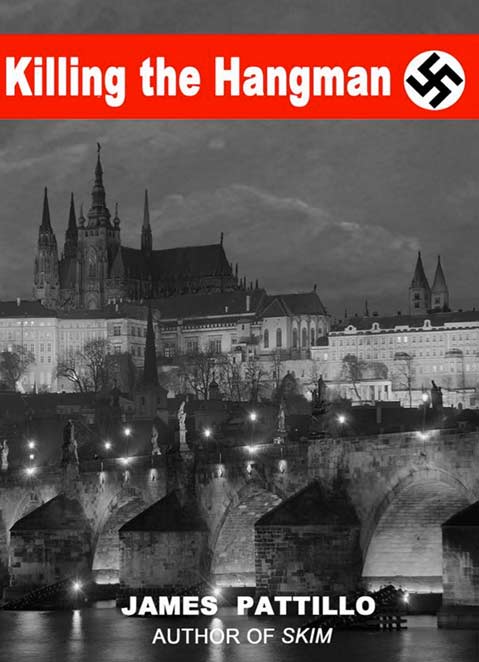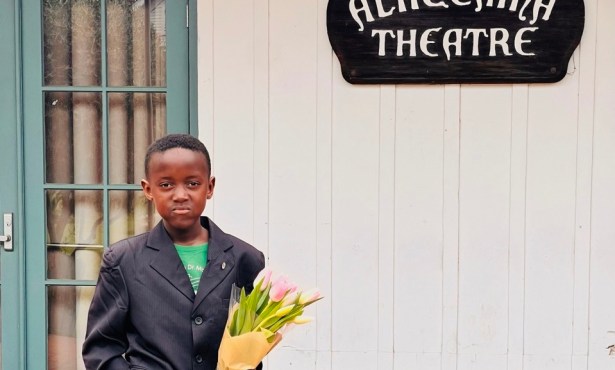Life in a Costume Shop: An Interview with Designer Pamela Shaw
A Peek at Film and Stage Costume Designer Pamela Shaw

Surrounded by Santa Barbara City College students diligently sewing gloves and camisoles by hand and machine, costume teacher and designer Pamela Shaw sets a delicate piece of trim in the burgundy bodice of a 19th-century dress for the upcoming Theatre Group at SBCC play In the Next Room (or the vibrator play). The class works collaboratively to create the wardrobe that Shaw envisioned for this comedy about marriage and the early history of the vibrator, which was originally used to treat female “hysteria.”
Although Shaw’s main work now is as a teacher, she began her career in television and film, which granted her membership to the Academy of Television Arts & Sciences and the honor of vice president of the Costume Designers Guild. In 2012, the silent film The Artist won Best Costume Design along with Best Picture, a result of Shaw’s work as assistant costume designer. In an interview with The Santa Barbara Independent , Shaw offered a glimpse into her inventive, industrious life.
Was there a specific moment that you knew you wanted to design costumes?
I was 18, living on my own, and needed a job. There was a job listed for a small rental costume shop for a theater or art major. I was a biology pre-med major, but it sounded like the job with the fun factor. The owner was very generous and, because I could sew, gave me a dance troupe to work with and design very soon thereafter.
Your costume-design experience is rather diverse. From stage to television to film to the classroom, you can do it all! How do your approaches to each differ?
The approach always starts with the narrative, whether that is a script, a storyboard, or a piece of music. “What story is being told?” After the initial introduction to the material, there is a period of reflection, research gathering, discussion with the director, and image selection. There is casting; as a costume designer, it’s all about the character and the human that embodies the character. That is the same for any project.
The execution then varies based on the viewing medium or the perspective of the audience. If it’s film, the audience will see details as selected by the director and DP [director of photography], which may be extreme close-ups. In theater, the audience usually is in a fixed location based on the relationship [between] audience seating to stage. The classroom is more informal, many variables with opportunity for instant feedback from student participants.
Do you have a preferred medium to design for — stage, TV, or film?
Not really; I like it all. Each medium has appeal, and working between formats offers a fresh perspective when returning to a familiar medium. It feels like an old friend with something new to share.
While helping with the designs for The Artist , did you imagine that it would win Academy Awards for Best Picture and Best Costume Design? What were your duties as assistant costume designer?
The costume supervisor, Barbara Inglehart (now on Scandal ) told Mark Bridges, the costume designer, that this was his Academy Award winner. It turns out that she was right. We all loved the story, commitment, and courage to make a “silent film.” It was very exciting that it won Best Picture and Best Costume Design.
Mark has great respect for the process and is involved in pulling costumes during prep. I was there beside him as we went from costume house to costume house, trying to find the right period of clothes. We pulled costumes to create a look for the entire picture. We had fittings with the stars prior to and continuing during filming to set their “closet” based on the script breakdown and shooting schedule. After filming started, Mark stayed on set to ensure his look was followed throughout, and I pulled the rest of things together for the day players. I was in all the fittings from beginning to end, shopped fabrics, and supervised made-to-order, even getting shoe and boot details custom-made for the chauffeur or the “new shoe” scene, all with Mark’s final approval. It was a real team effort.
How was it working for the costume design of the 1990s ABC show Grace Under Fire in comparison to the contemporary CW drama The Vampire Diaries ?
First is format: One is a sitcom done with four-camera video mostly on a sound stage in L.A., although we went to Graceland and a few locations; the other is a film shot in Atlanta with few choices locally for period costumes. I was the designer for Grace , so I made all choices for all the characters, all fittings, and was at both tapings in front of a live audience. Theater training was helpful in that situation.
As assistant designer for Vampire Diaries , I worked in L.A., long-distance from the designer and supervisor, and supervised pulling period costumes for the past period scenes. I sent complete looks for the leads, pulled and fit the day players in L.A., and sent pictures to the designer, and then sent their costumes overnight. Often we’d be pulling on Monday, fitting and shipping on Tuesday, and the actor would be on camera on Thursday.
What is a typical preshow work day for you?
That’s a crazy question! I get up at 5 a.m., walk the dog, feed the dog, scoop the cat boxes, feed the cats, get my high school son up, make breakfasts and lunches, get him to the bus, get my other son up and to school, all while on my way to SBCC. Whether prepping for a play or otherwise, those things have to happen.
At SBCC, I’m teaching 16 hours a week and then have prep and grading for that part of my life. I read scripts, create a costume plot detailing the show, meet with the director for design meetings, have production team meetings, and then plan the costumes that help support the character as the director wants the audience to perceive that character.
Once the play is cast, I work with Clarice Hillebrand, the costume shop manager, to get measurements and fittings scheduled. Our costume storage is 8.5 miles from SBCC West Campus at the Wake Center, so a considerable amount of time is spent going to that facility to pull costumes from our stock first. We have a good reciprocal costume loan agreement with UCSB and PCPA. With limited budgets, it’s important to mine all “free sources” first. Then we have fittings and establish all remaining costume pieces to be procured, whether that is made to order or rental. There are no real fabric stores in S.B. or costume-rentals house, so my car knows the way to L.A. very well.
I attend rehearsals, continue to have open communication with the director to best meet the needs of the production, and continually check in on progress with the shop. I try to have the classes have a piece of the play so they can take ownership and see their work onstage, if it’s costume construction, quick changes, or wig styling.
What kind of work do you do behind the scenes?
The same as before, but usually I’m working on the next show. Also, during the three dress rehearsals and two previews, I give detailed notes by character to shop and crew, reevaluate to ensure that the show is running smoothly and that the crew is comfortable and has been well-trained — the [crew is] always students, and often it is a first-time experience — and check for any problems or maintenance issues.
In designing the costumes for In the Next Room (or the vibrator play) , what has been your creative process and inspiration?
Lots of reading the script; it is very dense with imagery. The director is very engaged in dialogue — this is a favorite thing of mine! We talk about the script: “What does this mean? Why does the character say this at this time? How does that affect the interpretation of the character?”
Inspiration is in periodicals from the period of the 1880s. Looking at period garments and garment construction is always inspirational, and a trip to the fabric district in L.A. to see and feel the cloth. There’s also lots of research … The actors take very complex costumes off and on [while] onstage, so that needs to look comfortable for the audience and feel comfortable for the actors. This show calls for characters to undress, so each undergarment seen must be accurate and able to take on and off onstage. We also use lots of rehearsal garments and more rehearsal offstage for actors and dressers.
Do you have a favorite genre or time period to portray?
The one I’m working in! The bustle period [of the Victorian era]. Last year when we did Dead Man’s Cell Phone, I enjoyed the contemporary style with an individual character flare while taking into account the actor’s body, [as it was] another undressing onstage show. This year is historical with Music Man in 1908, Hound of the Baskervilles in London 1890, and New York 1888 for this play.
It’s rewarding to research an unfamiliar era, to discover how people lived and worked in that time period under the constraints of society and the garment. Usually the clothing is far more restrictive than contemporary style! The exciting moment is to translate that to the modern body so the actor has the freedom of expression for the character, or the actor can embrace the shape as something the character would live within. I look at it as a mosaic; every piece is reliant on the other.
4·1·1
Pamela Shaw’s costumes will be showcased in SBCC Theatre Group’s production of the comedy In the Next Room (or the vibrator play), which runs March 2-19, at the Garvin Theatre. For tickets, call (805) 965-5935, or visit theatregroupsbcc.com.



